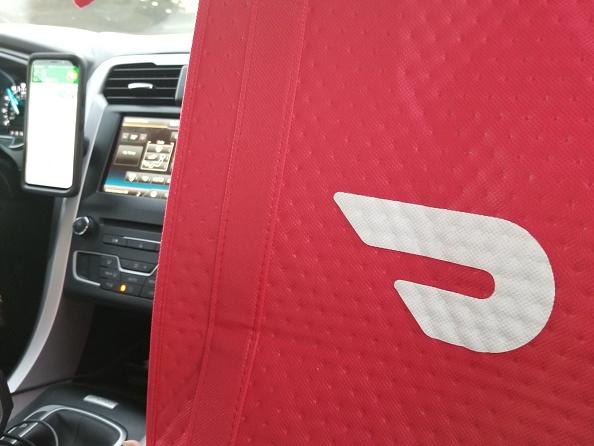Earlier this year, DoorDash came under fire for its payment structure, which included subsidizing drivers with tips. Essentially, DoorDash gives the tip to drivers, but they count it towards base pay.
The problem has been around for years with not only DoorDash but other delivery services. After a case where an Instacart shopper was given a $10 tip for an order but only got 80 cents in base pay — the company ended up changing its policies completely.
However, DoorDash has decided to double down on its questionable payment structure. In a blog post titled “Improving the Dasher Experience,” CEO Tony Xu wrote that the company will make changes by….breaking down the earnings after a delivery:
“We have always provided transparency on the front end of each dash by showing Dashers the guaranteed minimum, the location, and name of the restaurant, the drop-off location, the size of the order, and the estimated time to complete the delivery. We are now rolling out even more transparency after each dash. Right after your delivery, Dashers will be able to see the earnings breakdown, which will also be reflected in the weekly earnings tab.”
In other words, nothing about the payment model itself is changing. DoorDash just isn’t going to bother hiding how little drivers make.
DoorDash’s main defense is that it doesn’t technically reduce drivers’ pay based on tips. However, the company’s defense doesn’t sit well with many. Last month, a class action lawsuit including two DoorDash workers argued that the company redirects tip money to offset its own costs.
“For example, if DoorDash promised the Dasher $5 base pay for the delivery, and the customer tips the Dasher in an amount of $2, the Dasher still only gets $5,” the lawsuit said.
As more and more workers are forced into the gig economy, it’s important to confront predatory pay structures where they emerge. That’s where tech and labor organizers come in.
In response to DoorDash’s announcement, the Pay Up Campaign — a project of Working Washington — wrote, “Talking about transparency is good. And admitting you pay $1/job is better than denying it. But $1 is still $1.”
The campaign went on to add:
“DoorDash continues to stand behind an entirely opaque pay model which offers no way for workers to understand why they’re getting paid what they’re getting paid. They continue to subtract tips from worker pay. And they continue to mislead customers about where their tips are going. When a customer tips more, DoorDash pays less — in other words, the customer is tipping the company.”
The Pay Up campaign is asking for a minimum pay floor of $15 per hour plus expenses for time with an active job, tips, and a detailed breakdown of pay.
It’s clear that if left alone — DoorDash won’t voluntarily choose to change its payment model. As workers begin to organize for themselves, it’s important to remain aware of what they’re asking for versus listening to what the corporation (who is already mistreating them) make claims of what they think DoorDash drivers want.

